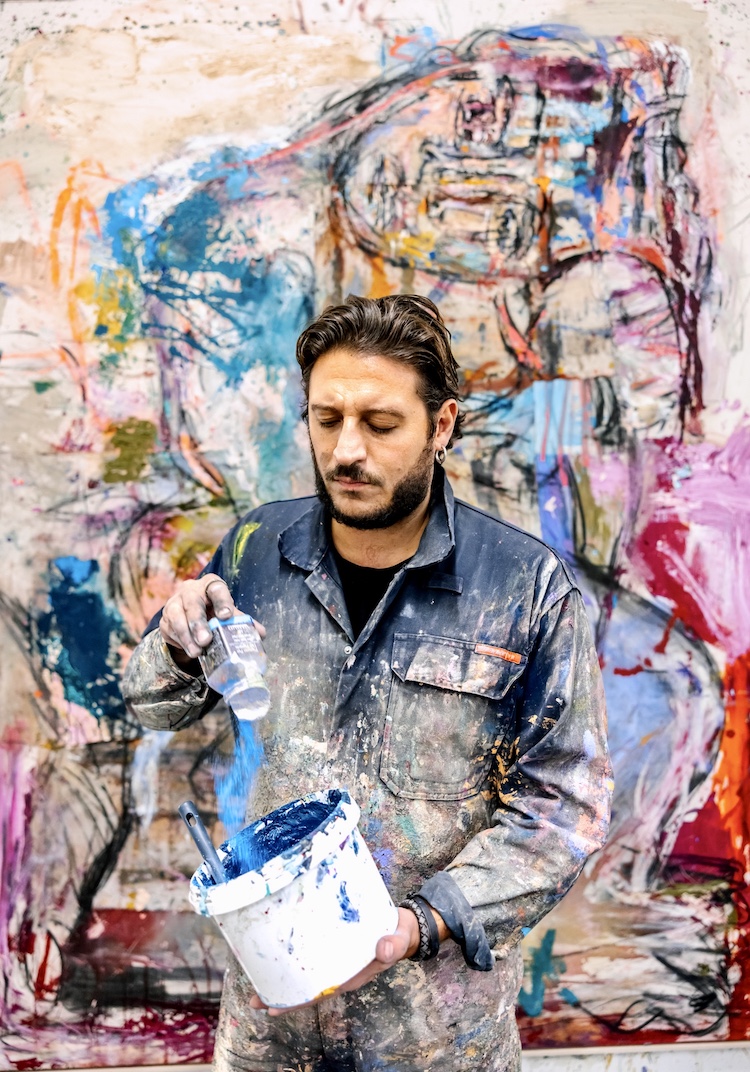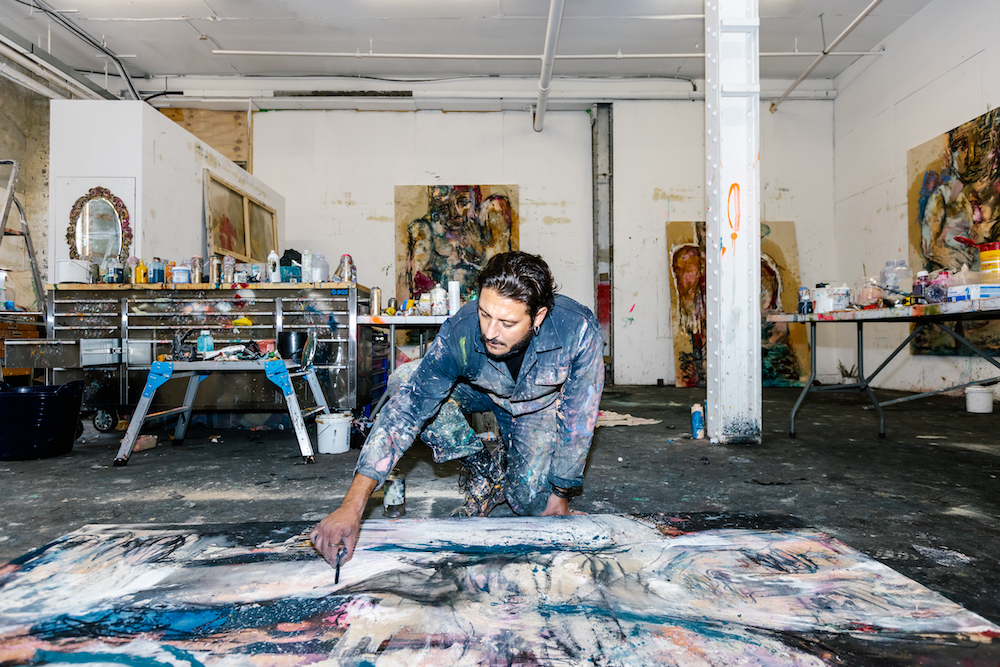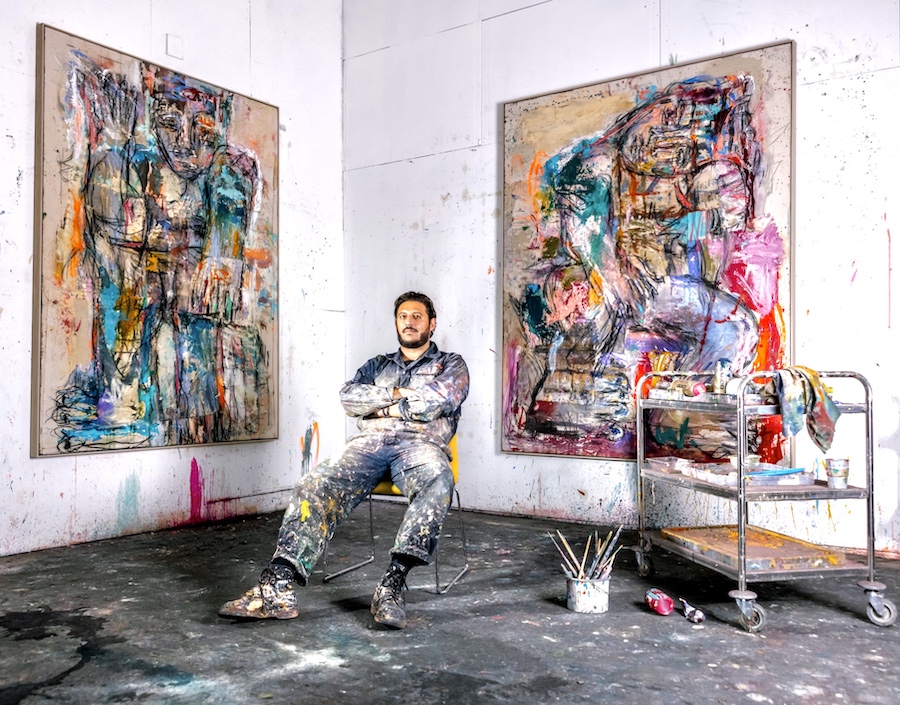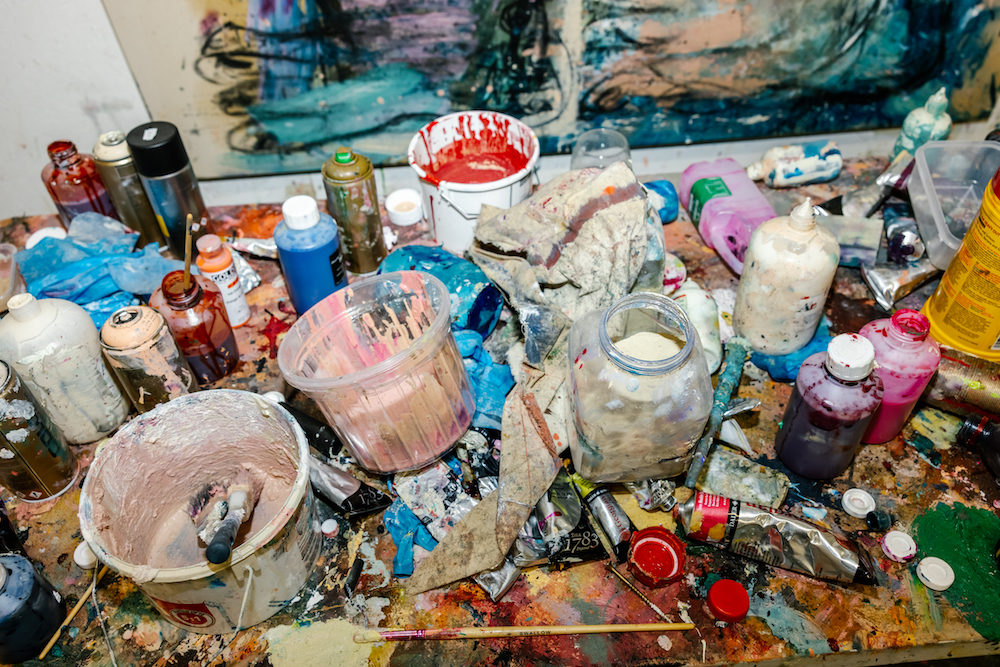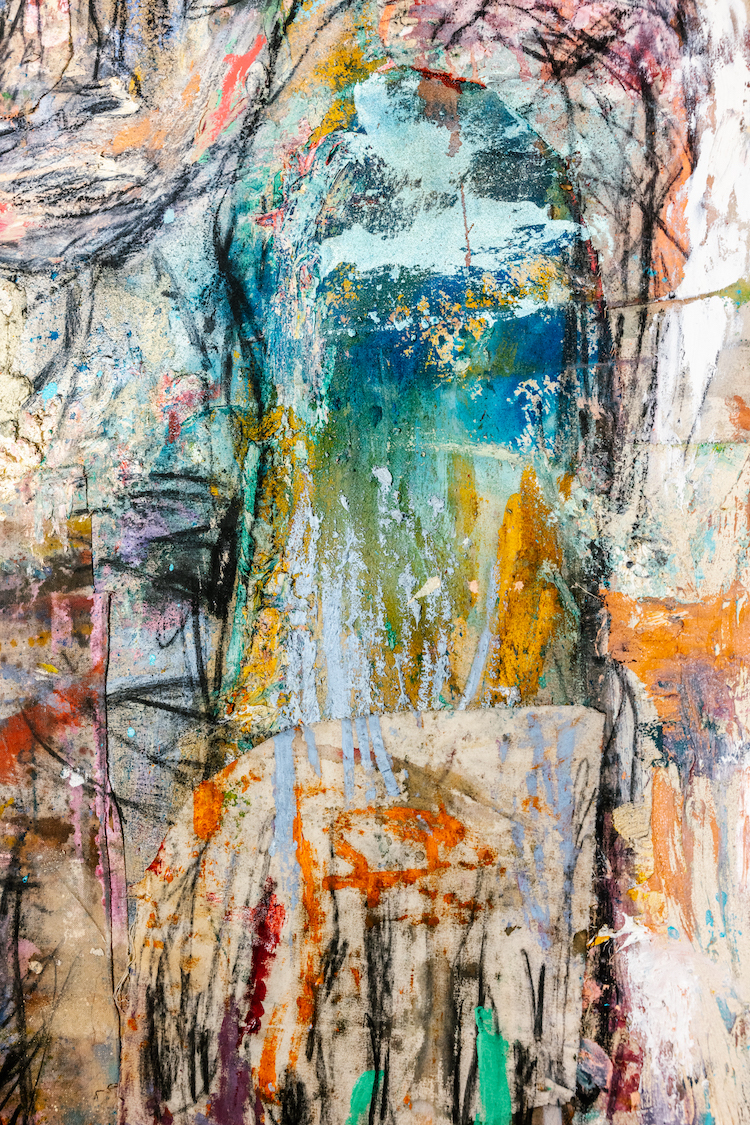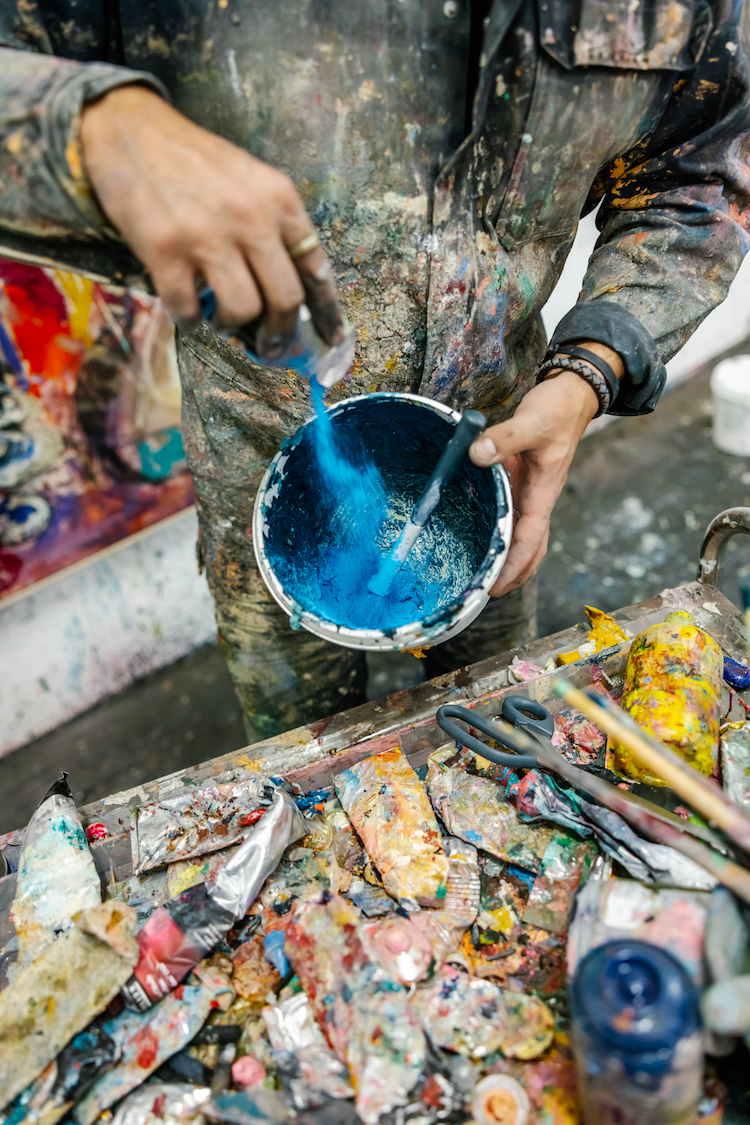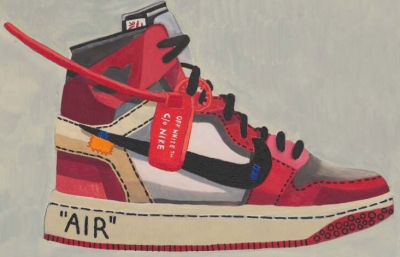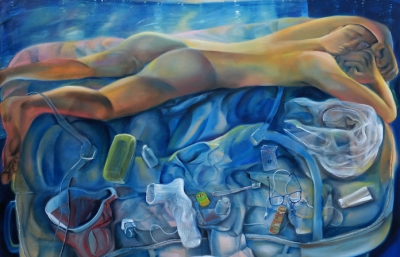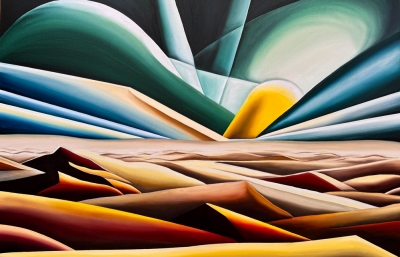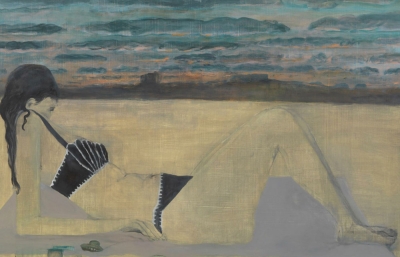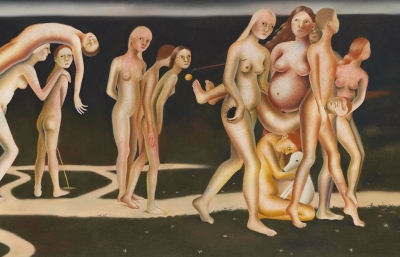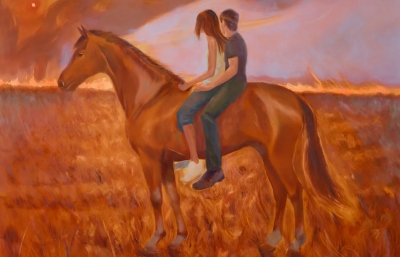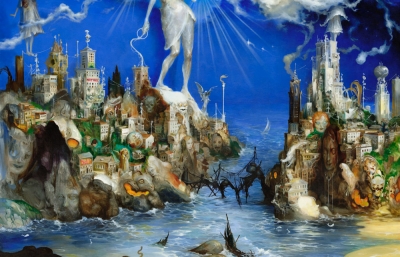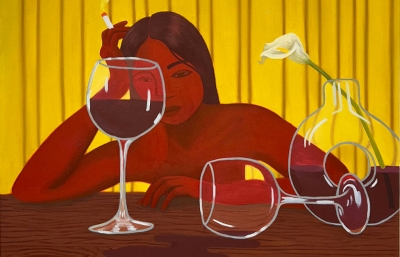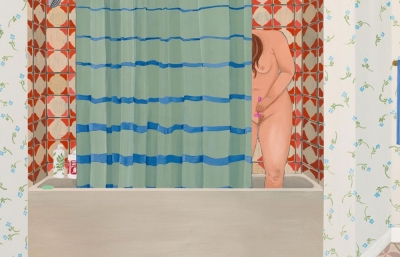Roberts Projects is pleased to announce Statuesque, Daniel Crews-Chubb’s third solo exhibition with the gallery. Comprising seven ambitious mixed-media paintings and six studies on paper, Statuesque presents a wide-ranging exploration of the artist’s relationship to historic artifacts. Crews-Chubb is a magpie for figurative sculpture across time and culture, collecting their poses, volumes, and ornaments. The artist has developed a powerful visual language connecting sources of inspiration from fearsome Aztec deities to Henry Moore’s deconstructed reclining women, and reflecting on our obsessive repetition of the human form in sculpture.
Crews-Chubb describes the figures in his work as evading identity by “resembling something familiar but also completely alien: Are they male or female? good or evil? human or non-human? They are like Frankenstein’s monster, a mix-mash of parts of things I have seen.” In their ambiguity, the motif of Crews-Chubb’s figure is an everyman of art history as well as a reminder of the omnipresence of the human image in our contemporary moment. This new body of work marks a transition from the ancient and ethnographic references of the artist’s Immortals series, currently on view at the Ashmolean Museum in Oxford, England to the imagery and gestures of the Italian Renaissance, which Crews-Chubb has been studying in preparation for his major 2024 exhibition at the Museo 900 in Florence. Transported to Los Angeles, a place synonymous with newness and modernist experimentation, the works included in Statuesque reimagine historical iconography in the city’s graffiti-punctuated palette and sprawling scale.
In the first gallery, single figures or ‘icons’ are shown together with thirteen-foot-wide paintings of three figures intertwined. These range from the solid, silhouetted form of Immortal XIX (pink) (2023), to the frenetic action of Three Immortals (petrol blue and mustard) (2023). The latter work reveals more of the artist’s process, with large swaths of jewel-toned pigment anchoring the akimbo limbs and tilted heads of the subjects in the center. These paintings all begin on the ground, where Crews-Chubb splashes each canvas with inks to create the imprecise shape of figures. These uncontrived color fields allow the artist to “read the tea leaves” as he describes it: Crews-Chubb is fascinated with the cognitive phenomenon of pareidolia, or the mind’s tendency to recognize familiar objects in abstract shapes, like seeing an animal in the clouds. Allowing that subconscious process to guide his compositions, he then sketches over these organic inky forms with more precise outlines in charcoal, and then builds the compositions with impastoed oils, neon spray paint, ground pumice, and layered strips of canvas.
This approach is not unlike a sculptor’s demandingly physical methodology of building up and carving away from natural materials like marble or clay. In the final work, moments from Crews-Chubb’s energetic production process are left visible to the viewer, with accidental or unguided marks animating more controlled and intentional elements. The final result produces the viewer’s own experience of pareidolia: seeing a slash of red paint as a cape, just as the superhero-like character in Immortal XXI (ultramarine blue) (2023) wears, or a comb-like shape towards the base of the work as a foot. This effect pulls the viewer into the monumental paintings, bringing the endless scroll of our contemporary image repertoire along into the work.
The second gallery focuses on a nearly monochromatic group of works on paper in layers of oil stick, ink, charcoal, acrylic, and spray paint. Crews-Chubb often produces studies at the end of a series, rather than at the preparatory stage. These six drawings act as a coda to the Immortals series created for the artist’s first major institutional exhibition at the Ashmolean Museum, which opened in July this year. The Immortals focus on the repetitive return to the human form in art through the millennia, particularly in representations of gods and deities. The repetition of a generalized or hybridized human figure in Crews-Chubb’s own work lends an immortality to the mortal, connecting the contemporary with the ancient. In these studies, stripped of his usual bright palette and ornate layering, Crews-Chubb analyzes the Immortals in order to find new compositions for future work. In these pared-down works, the careful balancing act at work in the paintings between contrived and uncontrived, recognizable and unrecognizable, comes to the fore.
The motif of the figure in the artist’s oeuvre functions as a structural device to explore abstract mark making. Crews-Chubb has observed, “I think that there is a lot of tension in my work; tension between the figurative and the abstract, between the material and the image.” That tension between abstraction and figuration takes cues from 20th Century modernist masters like Willem de Kooning and Georg Baselitz, who also used stylized figural motifs as a through-line in their highly experimental practices. In these smaller black-and-white studies, the framing device of the figure becomes less recognizable than in Crews-Chubb’s monumental paintings. The disparity between the two spaces highlights the drama of conflicting forces balanced in these Statuesque paintings. As the artist notes, “the figure-as-motif somehow controls the chaos.”



